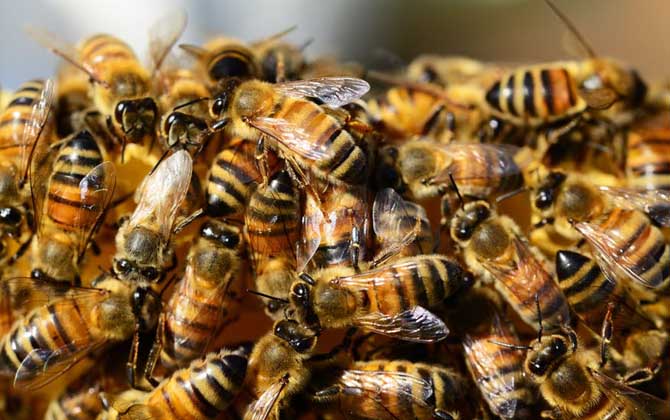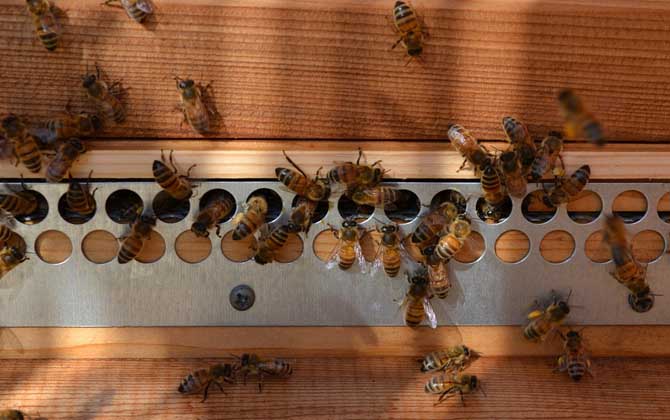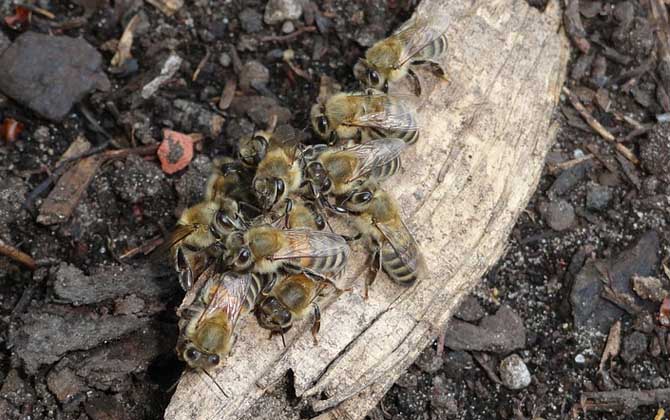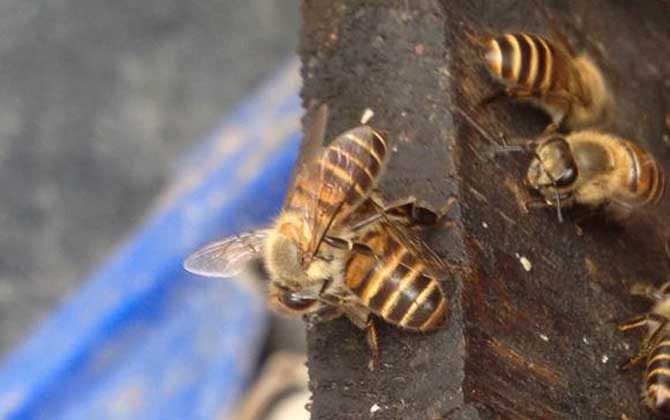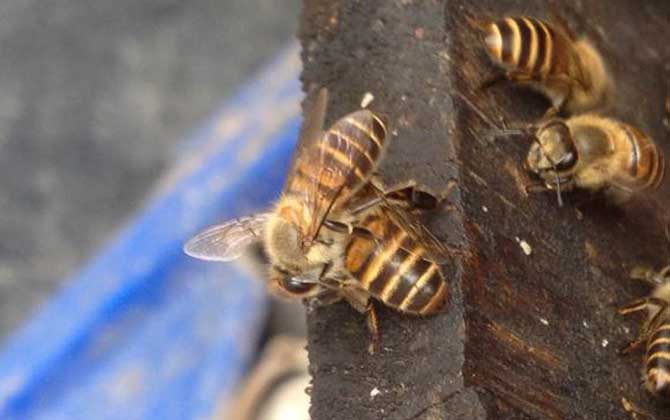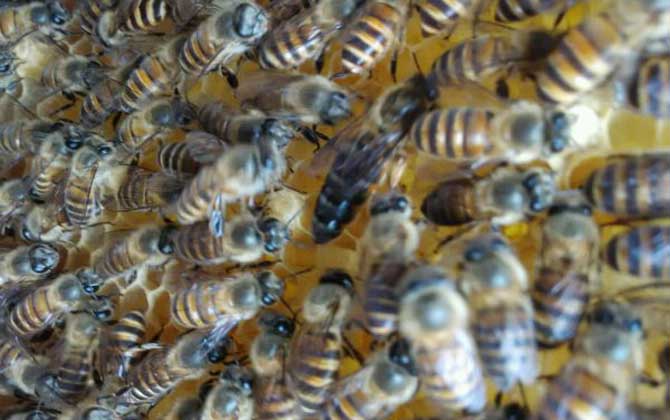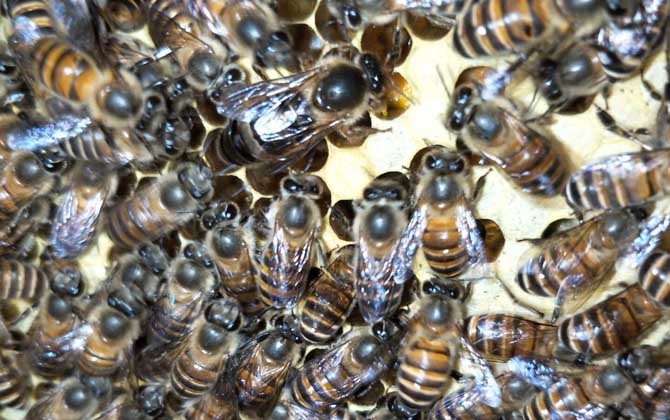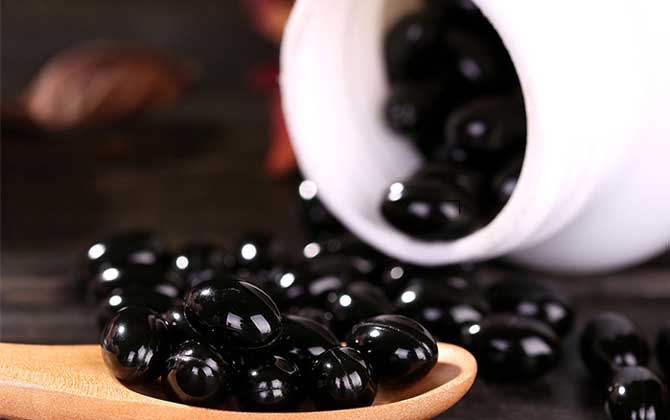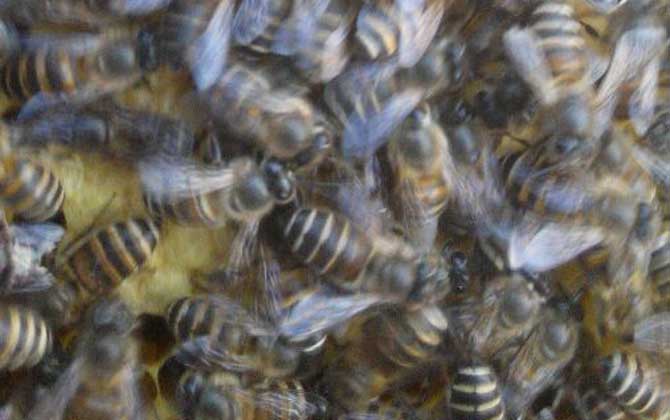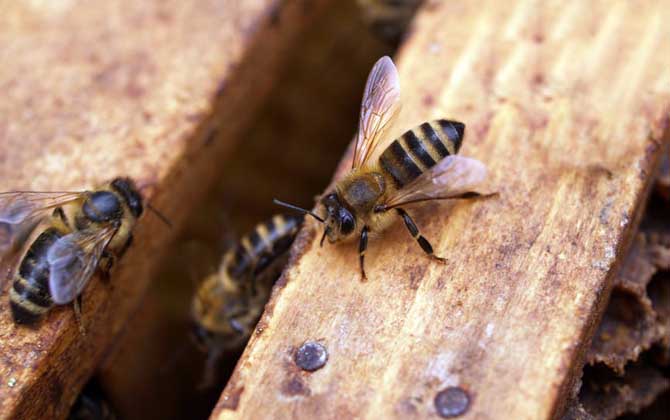Beekeeping in China: Future Prospects and Profitability in Honey Production Industry
2025-04-18
Beekeeping: A Promising Agricultural Practice with Growing Potential Introduction to Apiculture Bees, the remarkable social insects that feed exclusively on flowers, have been celebrated throughout history for their honey-producing capabilities. While honey collection remains the primary purpose of beekeeping, modern apiculture offers multiple valuable products and plays crucial ecological roles. For aspiring beekeepers, understanding the industry’s potential is essential. Let’s explore the development prospects of apiculture through several key aspects. 1. High Market Demand for Bee Products The apiculture industry yields various premium products that enjoy growing global popularity: Honey: A natural sweetener produced from flower nectar, containing antioxidants and enzymes. Propolis: A resinous mixture with antimicrobial properties, used in health supplements. Royal Jelly: A nutrient-rich secretion fed to queen larvae, valued in cosmetics and supplements. Other Products: Bee pollen (dietary supplement), beeswax (cosmetics), bee venom (medical applications), and edible bee brood. Global honey market value reached $8.5 billion in 2022, projected to grow at 5.3% CAGR through 2030 (Grand View Research). 2. Environmental Conservation Synergy Modern beekeeping aligns with ecological protection efforts: Requires pesticide-free environments with abundant floral resources Benefits from global reforestation initiatives and sustainable farming practices Enhances crop pollination (increasing yields by 20-30% in many cases) Promotes biodiversity preservation China’s natural forest area increased by 22 million hectares between 2010-2020, creating better habitats for apiculture. 3. Technological Advancements in Apiculture Modern solutions enhance beekeeping efficiency: Technology Application Remote Hive Monitoring Real-time temperature/humidity tracking AI-assisted Swarm Management Predictive analysis for colony health Mobile Learning Platforms Access to global expert knowledge Online platforms like Beekeeping-forums.com and Apis Academy provide affordable training courses and troubleshooting resources. 4. Evolving Market Channels The digital revolution transformed honey distribution: E-commerce platforms enable global reach Blockchain tracking ensures product authenticity Direct-to-consumer models through social media Subscription-based honey services Key Success Factors: – Quality certification…
Chinese Honey Bee Hive Price: Cost per Hive in Rural China & Beekeeping Guide
2025-04-18
Chinese Honey Bees (Apis cerana cerana): A Comprehensive Guide Chinese honey bees, commonly known as native bees, refer to the subspecies Apis cerana cerana. Widely distributed across China, these bees are particularly concentrated in southwestern and southern regions. Renowned for their exceptional adaptability to China’s diverse natural environments, they have become the most widely cultivated bee species in the country. Below, we explore the pricing of rural native bee colonies and key factors influencing their market value. 1. Seasonal Price Fluctuations The average price for a colony of native bees ranges between ¥500 to ¥600 per box. However, significant seasonal variations exist: Spring: Higher prices (¥550-650) due to immediate honey production potential Autumn: Lower prices (¥450-550) with delayed returns and winter survival risks Seasonal considerations are crucial for beekeeping success. Novice beekeepers are advised to purchase colonies during spring or summer to maximize first-year productivity and minimize overwintering challenges. 2. Regional Price Differences Geographical factors create substantial price disparities: High-density areas (SW China): ¥300-400 per colony Low-density regions: ¥600-800 per colony Transportation costs add ¥50-200 depending on distance Proximity to bee distribution hubs significantly affects final pricing. Local purchases often prove more economical despite apparent higher base prices. 3. Genetic Variations & Pricing China’s diverse ecosystems have produced distinct subspecies: Subspecies Region Price Range South China Bee Subtropical zones ¥450-550 Northern China Bee Temperate regions ¥500-600 Aba Mountain Bee Sichuan Basin ¥600-700 Queen bee coloration (red, brown, mottled, black) also influences pricing, with darker varieties generally commanding 10-15% premiums for perceived hardiness. 4. Colony Strength & Value Colony vitality directly impacts pricing: Early Spring: 3+ frames = ¥550+ Nectar Flow Season: 7-8+ frames = ¥800+ Strong colonies demonstrate: Higher survival rates (85% vs 60% for weak colonies) 30-40% greater honey production Better disease resistance Key Purchasing Considerations When acquiring native…
Why the Decline of Beekeeping in China? 5 Key Factors Deterring Youth from Traditional Apiculture Industry
2025-04-15
Why Beekeeping Faces Challenges in Modern Times Beekeeping, a traditional agricultural practice with a history spanning thousands of years in China, provides valuable products like honey, royal jelly, and beeswax. However, this industry is predominantly sustained by middle-aged and elderly practitioners, with very few young professionals dedicated to apiculture. Let’s explore the key challenges facing this ancient craft. 1. High Climate Dependency Beekeeping success is heavily reliant on weather conditions. Key challenges include: Critical nectar flow periods disrupted by continuous rainy days Unpredictable weather patterns reducing honey production efficiency Climate change intensifying seasonal irregularities For instance, colonies cannot forage during prolonged rainfall, leading to wasted nectar sources. Multiple unfavorable weather events within a year can result in significant financial losses, making apiculture a high-risk venture that deters younger generations. 2. Technical Expertise Requirements Modern beekeeping demands specialized skills: Colony management and disease prevention knowledge Continuous learning through years of practical experience Adaptation to new apiculture technologies and methods Many young practitioners abandon the trade within 1-2 years due to initial failures, while older beekeepers persist through accumulated experience. This creates an aging workforce as youth prefer stable, short-term income opportunities. 3. Market Challenges for Authentic Honey The honey market presents three major obstacles: Consumer Awareness: 68% of buyers cannot distinguish real honey from adulterated products Production Issues: Easy adulteration methods using corn syrup or additives Price Competition: Fake honey sold at 30-50% lower prices than genuine products This has created a distorted market where low-quality products dominate, squeezing ethical beekeepers out of profitability. 4. Nectar Source Limitations Essential requirements for sustainable apiculture: Diverse flowering plants within 3km radius of apiaries Balanced colony density (recommended: 2-3 hives per hectare) Pesticide-free agricultural environments Modern challenges include shrinking wildflower areas due to urbanization and frequent pesticide poisoning incidents, with studies showing 23% colony…
Why Beekeeping Struggles to Generate Profit: Key Challenges in Modern Apiculture
2025-04-14
Why Beekeeping is a Challenging Business Beekeeping is often perceived as a “sweet” and idyllic profession, with many believing that simply managing a few hives can generate substantial income. However, the reality is far more complex. Most beekeepers struggle to break even, let alone make profits. Let’s explore the key challenges that make commercial beekeeping financially demanding. 1. Low Honey Yield Per Colony Honey production remains the primary revenue source for beekeepers, yet output varies dramatically between species and management practices: Chinese honeybees (Apis cerana) in stationary apiaries produce only 5-10 kg annually per colony Exceptional colonies may yield up to 10 kg, but rarely exceed this threshold Apiary size limitations: Maximum 50 colonies per site to prevent nectar resource depletion Comparative data shows European honeybees (Apis mellifera) can produce 20-30 kg annually under optimal conditions, but require migratory beekeeping practices. 2. Unpredictable Income Streams Multiple factors contribute to significant annual income fluctuations: Factor Impact Climate Variability 40-60% yield variation between years Nectar Flow Patterns Biennial bearing in major nectar plants Weather During Foraging Rainy spells during peak flow reduce yields by up to 70% Recent climate changes have exacerbated these challenges, with increasing frequency of extreme weather events. 3. Adulterated Honey Market Crisis The global honey market faces severe authenticity issues: Fake honey production costs: $1-2/kg vs real honey’s $4-8/kg Adulteration methods: Rice syrup blending, chemical additives, artificial flavoring Market penetration: 30-40% of commercial “honey” products are adulterated (FDA estimates) This malpractice erodes consumer trust, with 65% of buyers expressing skepticism about honey authenticity in recent surveys. 4. Technical Complexity and Risks Successful beekeeping requires specialized knowledge and risk management: Seasonal Management: Critical timing for spring colony expansion varies by region Disease Control: American Foulbrood (AFB) and Varroa mites can wipe out entire apiaries Colony Collapse Disorder: 30-50% annual…
Beekeeping Profit in China: How Much Can 100 Beehives Generate Annually?
2025-04-13
Beekeeping: An Ancient Yet Emerging Agricultural Practice Beekeeping stands as both an ancient tradition and a modern agricultural pursuit. Its ancient roots trace back thousands of years, while its emerging status reflects the maturation of innovative apiculture technologies. However, profitability remains a crucial consideration in any farming venture. Let’s explore the financial potential of managing 100 beehives. I. Cost Analysis of Beekeeping The primary costs in beekeeping involve bee colonies, equipment, and medications, with variations depending on bee species. We’ll analyze using fixed-location Chinese honey bees (Apis cerana) as our model. Bee Colonies: Initial investment of ¥500-600 per hive (calculated at ¥600). For 100 hives: 100 × 600 = ¥60,000 Equipment: Includes hives, frames, and protective gear. Average ¥100 per hive. Total: 100 × 100 = ¥10,000 Additional Costs: Feed supplements and medications (≤¥50/hive annually). Total: 100 × 50 = ¥5,000 Total Initial Investment: ¥75,000 first year, reduced to ¥5,000 annually thereafter (excluding colony/equipment replacement) II. Revenue Streams in Beekeeping Chinese honey bees primarily produce raw honey (rarely royal jelly or propolis). Key revenue factors include production volume and market pricing. Annual Yield: 5-15 lbs/hive (average 10 lbs). 100 hives = 1,000 lbs Market Value: Premium pricing at ¥100-250/lb (calculated at ¥150) Gross Revenue: 1,000 × 150 = ¥150,000 annually Pro Tip: Value-added products like beeswax candles or pollen supplements can increase revenue by 15-20%. III. Profitability Breakdown Full profitability manifests from the second year onward due to initial setup costs. Year Investment Revenue Net Profit 1 ¥75,000 ¥150,000 ¥75,000 2+ ¥5,000 ¥150,000 ¥145,000 IV. Key Factors Affecting Profitability Multiple variables influence operational success: Climate Conditions: Critical nectar flow periods require optimal weather Extended rainy seasons can reduce yields by 40-60% Technical Expertise: Skilled keepers achieve 20% higher yields Proper swarm management reduces colony losses Yield Optimization: Strategic hive placement…
Calculating Beekeeping Profits:Income Potential of 20 Beehives in Modern Apiculture
2025-04-12
Beekeeping Profit Analysis: 20 Hives Case Study Beekeeping primarily aims to harvest honey and other bee products. Historians suggest apiculture in China dates back to the Shang Dynasty (1600-1046 BCE). Today, it remains a vital income source for professional beekeepers. For beginners understanding profitability is crucial. Let’s examine the potential profits from maintaining 20 beehives. I. Beekeeping Costs Breakdown A. Chinese Honey Bees (Apis cerana) Queen bees: ¥500-600 per hive Equipment (hive tools, smokers): ¥100-150 Medications & feed supplements: ¥50-100 First-year cost per hive: ¥700 20 hives initial investment: ¥14,000 Subsequent annual costs: ¥2,000 (equipment maintenance and feed) B. Italian Honey Bees (Apis mellifera) Queen bees: ¥100-200 per hive Standard equipment: ¥100-150 Disease control & nutrition: ¥100-200 First-year cost per hive: ¥300 20 hives initial investment: ¥6,000 Subsequent annual costs: ¥4,000 (higher medication needs) II. Revenue Streams Analysis A. Chinese Honey Bees Stationary apiaries: 5-15 jin/hive/year (1 jin=0.5kg) 20 hives annual yield: 200 jin Premium pricing: ¥100-200/jin Total revenue: ¥30,000 Additional products: Beeswax (¥50-80/jin), Royal jelly (¥1,500-2,000/kg) B. Italian Honey Bees Migratory beekeeping: 100-200 jin/hive/year 20 hives annual yield: 3,000 jin Bulk wholesale pricing: ¥10-20/jin Total revenue: ¥45,000 Additional income: Pollination services (¥80-120/hive/season) III. Profit Comparison Metric Chinese Bees Italian Bees First Year Revenue ¥30,000 ¥45,000 First Year Costs ¥14,000 ¥6,000 Net Profit (Year 1) ¥16,000 ¥39,000 Subsequent Annual Profit ¥28,000 ¥41,000 IV. Key Profitability Factors Bee Species Selection Chinese bees: Lower yield (5-15 jin) but premium pricing Italian bees: High yield (100-200 jin) with mass-market pricing Climate Considerations Ideal temperature range: 15-25°C Critical rainfall factor: <500mm annual precipitation preferred Technical Expertise Colony management success rate: 60% (novices) vs 90% (experts) Disease prevention protocols reduce losses by 40% Yield Optimization Strategic hive placement increases yield by 15-20% Modern extraction techniques preserve 95% comb structure V. Market Insights (2023 Data) Global…
Chinese Honey Bee Autumn Swarming: Optimal Timing in September-October & Climate Impact Guide
2025-04-12
The Chinese Honey Bee: A Native Treasure The Chinese Honey Bee (Apis cerana cerana), an indigenous species to China, stands as a remarkable example of ecological adaptation. Before the introduction of Western honey bee varieties like the Italian bee (Apis mellifera), these resilient insects dominated Chinese apiculture. While excelling in local environmental adaptation, they present unique management challenges including frequent swarming tendencies, migratory behaviors, and vulnerability to wax moth infestations. This article provides an in-depth exploration of their autumn swarming patterns and related characteristics. I. Species Characteristics As China’s exclusive native honey bee species, Apis cerana cerana demonstrates exceptional traits: Advantages: Superior environmental adaptability Agile flight capabilities Acute olfactory senses Efficient utilization of scattered nectar sources Natural resistance to Varroa mites and American Foulbrood Challenges: Proneness to swarming (3-5 times annual tendency) Strong robbing behavior between colonies Susceptibility to Sacbrood virus Smaller colony size compared to European bees Lack of propolis collection behavior II. Swarming Frequency Patterns Natural swarming typically occurs 1-2 times annually, with these key phases: Drone cell construction (Day 1-10) Drone maturation period (Day 11-24) Queen cup development (Day 25-32) Queen cell sealing (Day 33-38) Primary swarm departure (Day 39-45) Notably, a single swarming event may produce multiple secondary swarms (cast swarms), particularly in strong colonies. This secondary swarming can result in 4-5 new colonies from one original hive. III. Seasonal Swarming Patterns Autumn swarming typically peaks between September-October, influenced by: Factor Impact Post-summer colony recovery Increased population strength Autumn nectar flow Goldenrod and asters provide resources Optimal temperatures 15-25°C ideal for swarm survival This period also offers prime opportunities for wild swarm capture, particularly in southern China’s subtropical regions. IV. Swarm Prediction Indicators Beekeepers should monitor these critical signs: Stage 1 (40-day warning): Drone cell proliferation Stage 2 (15-day alert): Queen cell appearance Stage 3 (7-day…
How Often to Feed Bees Sugar in Winter: Key Strategies for Cold Climate Beekeeping Success
2025-04-10
Ensuring Safe Wintering for Bees: Feeding Strategies and Key Considerations Why Winter Feeding Matters Adequate food supply is crucial for bees to survive winter safely. Strong colonies with sufficient stores can withstand temperatures as low as -40°C (-40°F) through their unique survival mechanisms. During winter, bees form tight clusters and generate heat by consuming honey. Without proper nutrition, colonies face high risks of freezing or starvation. This guide explores optimal sugar feeding frequencies and winter management practices for beekeepers. I. Winter Survival Mechanisms As semi-dormant social insects, honeybees exhibit remarkable cold-weather adaptations: Cluster Formation: Bees form winter clusters when temperatures drop below 12°C (54°F) for European honeybees or 8°C (46°F) for Asian honeybees Temperature Regulation: The cluster maintains core temperatures above 24°C (75°F) through metabolic heat from honey consumption Social Organization: Queens remain at the warm center while worker bees rotate positions periodically II. Regional Wintering Patterns Wintering duration varies significantly by climate: Region Winter Start Duration Northern China Early November 5-6 months Southern China Late December 2-3 months Tropical Areas No distinct winter N/A III. Feed Preparation Methods While honey remains the ideal food, practical alternatives include: Sugar Syrup Formula: 1:1 white sugar to water ratio Boil water first to eliminate impurities Add supplements: 0.1% salt or multivitamin tablets Emergency Feeding Options: Dry sugar cakes Fondant patties Pollen substitutes (for late winter preparation) IV. Feeding Strategies Optimal Approaches 🟢 Best Practice (Pre-winter Preparation) – Check hive stores 2-3 weeks before first frost – Feed until bees stop accepting syrup – Allow 10 days for moisture reduction 🟡 Mid-winter Intervention – Conduct quick inspections during warm spells (>10°C) – Use frame feeders for minimal disturbance – Prioritize strong colonies 🔴 Daily Feeding (Last Resort) – Only for emergency situations – Use warm syrup (35-40°C) to prevent chilling – Monitor colony…
Queen Bee Death: Do Honeybee Colonies Abandon the Hive?
2025-04-10
The Queen Bee: Heart of the Honeybee Colony The queen bee, also known as the hive mother or matriarch, serves as the cornerstone of bee society. Her primary roles include laying eggs (up to 2,000 daily) and secreting queen pheromones that regulate colony behavior. Without a queen, the colony faces eventual collapse as worker bees dwindle. This article explores what happens when the queen dies and how colonies respond. I. Honeybee Social Structure Bee colonies represent one of nature’s most sophisticated social systems, comprising three distinct castes: Queen: Single reproductive female (lives 2-5 years) Drones: 500-1,500 male bees (die after mating) Workers: 20,000-80,000 sterile females (lives 6 weeks in summer) The queen’s pheromones maintain social order, suppressing worker ovaries while coordinating colony activities through chemical communication. Drones exist solely for mating, while workers perform all hive maintenance, foraging, and brood care duties. II. Consequences of Queen Loss Contrary to common belief, queenless colonies typically remain in their hive, entering a critical survival phase with two potential outcomes: Scenario 1: Successful Recovery Scenario 2: Colony Collapse Presence of young worker larvae (1-3 days old) Workers build emergency queen cells New queen emerges in 16 days No suitable larvae available Worker ovary development (within 2-3 weeks) Unfertilized eggs → drones only Colony fails within 6-8 weeks III. Emergency Queen Rearing When creating emergency queen cells, bees demonstrate remarkable biological adaptability: Workers select young female larvae (≤3 days old) Existing worker cells are modified into vertical queen cells Royal jelly feeding intensifies (queen larvae receive 10x more than workers) Multiple queen cells created (typically 10-20) as biological insurance Key differences in cell placement: Strong colonies: Lower comb edges (better protection) Weak colonies: Central comb areas (easier access) IV. Worker Bee Reproduction When queen replacement fails, worker bees exhibit unique physiological changes: Ovaries activate…
Propolis Benefits and Risks: 4 Groups Who Should Avoid It to Prevent Health Complications
2025-04-10
Propolis: Nature’s Pharmacy with Precautions Propolis serves triple roles in bee colonies: repairing honeycombs, maintaining colony health, and acting as a natural medicine containing over 400 bioactive compounds. However, this “bee glue” isn’t suitable for everyone. Our guide reveals 4 groups who should avoid propolis and provides essential usage insights. 1. Nutritional Powerhouse Dubbed “nature’s medicine cabinet”, propolis contains: Flavonoids: Quercetin, rutin (30+ identified types) Amino Acids: Histidine, lysine, arginine Organic Acids: Benzoic acid, caffeic acid Vitamins: B-complex including B12 (rare in plant sources) Minerals: Calcium (50-500ppm), magnesium, zinc Modern research has identified antimicrobial caffeic acid phenethyl ester (CAPE) and anti-cancer artepillin C as key active components. 2. Optimal Usage Guidelines Timing Best absorbed when taken 1hr before meals or 2hrs after eating. Morning intake aligns with natural cortisol rhythm for better nutrient utilization. Forms & Preparation Tinctures: Mix with warm water (<60°C) to preserve enzymes Capsules: Swallow with fat-containing drinks for lipophilic compounds Topical use: 5-10% dilution for skin applications Dosage Form Daily Dose Raw propolis 1-3g Extracts (30%) 300-900mg Capsules Follow manufacturer guidelines 3. Who Should Avoid Propolis? Allergy-prone Individuals: 3-5% of users experience reactions ranging from oral allergy syndrome to anaphylaxis Pregnant Women: May stimulate uterine contractions (study shows 15% increased contraction frequency) Medication Users: Potentiates anticoagulants (e.g., warfarin) and antidepressants Children Under 12: May interfere with immune system development 4. Beneficial Applications Immune Support Clinical trials show 23% reduction in cold frequency with 500mg/day propolis extract Diabetes Management Reduces HbA1c by 2% when combined with metformin (6-month study) Cardiovascular Health Lowers LDL cholesterol by 15-20% in hyperlipidemic patients 5. Essential Precautions Quality Verification Authentic propolis should have: ISO 19612 certification ≥45% total phenolic content Batch-specific lab reports Drug Interactions Consult healthcare providers if using: Anticoagulants Immunosuppressants Chemotherapy drugs Usage Monitoring Conduct 3-day patch test before regular…
Wasp Nest on Window: Potential Dangers and Why Immediate Removal is Crucial
2025-04-10
Wasps Building Nests on Windows: Good Omen or Potential Danger? Wasps, scientifically known as Vespidae (commonly called hornets, yellow jackets, or paper wasps), are stinging insects belonging to the suborder Apocrita along with bees and ants. Characterized by their slender waists and venomous stingers connected to abdominal poison glands, these insects will swarm aggressively when threatened. This article explores whether wasp nests on windows bring good fortune or pose risks. I. Biological Classification Wasps represent one of the most common hymenopteran groups, classified under: Kingdom: Animalia Phylum: Arthropoda Class: Insecta Order: Hymenoptera Suborder: Apocrita Superfamily: Vespoidea With over 15,000 species worldwide, approximately 5,000 have been identified. China alone documents 200 species, predominantly from genera Vespa, Polistes, and Dolichovespula. These social insects play crucial ecological roles as predators of agricultural pests. II. Cultural Beliefs Traditional Chinese folklore interprets wasp nests on windows as auspicious signs, based on three symbolic connections: The proverb “Bees bring wealth, swallows bring nobility” (蜂来富,燕来贵) Phonetic similarity between “wasp” (蜂 fēng) and “phoenix” (凤 fèng) Association with the mythical phoenix’s auspicious symbolism This superstition suggests impending good fortune, financial success, and wish fulfillment for homeowners. III. Scientific Perspective While the “good luck” interpretation lacks scientific basis, wasp nest location indicates: Environmental quality: Wasps require specific conditions – low pollution, stable temperatures (20-30°C), and humidity levels (40-70%) Food availability: Presence of adequate insect prey and plant resources Safety factors: Protected locations away from constant disturbances A nest on your window primarily reflects suitable habitat conditions rather than mystical signs. IV. Practical Management Proper nest handling requires balanced consideration: Action Needed When Recommended Approach Nest poses direct threat Contact professional pest controlNever attempt removal yourself Nest in safe location Maintain 3-meter safety distanceInstall window screensAvoid sudden movements nearby Venom potency varies by species, with some wasp stings containing: Histamines…
Honey Bee Habitat Essentials: Critical Environmental Requirements for Chinese Apis cerana and Italian Bees Nesting Survival
2025-04-10
Bees: Social Insects and Their Habitat Requirements Bees are eusocial insects belonging to the family Apidae and genus Apis, comprising nine recognized species. Renowned for their flower-visiting and honey-producing capabilities, they play crucial ecological and economic roles. Among them, the Chinese Honey Bee (Apis cerana) and Western Honey Bee (Apis mellifera) are the most widely recognized species. Let’s explore the key environmental factors influencing bee colonies. I. Temperature Regulation in Bee Colonies Bee colonies demonstrate remarkable thermoregulation abilities: Maintain precise hive temperature between 34-35°C for brood development Cooling mechanisms include wing fanning and water collection during overheating Winter clustering behavior preserves heat through metabolic activity (honey consumption) Optimal ambient temperature range: 15-25°C Extended exposure below 10°C reduces worker bee lifespan during overwintering Recent studies show temperature fluctuations exceeding ±2°C from ideal brood temperature can impair larval development. II. Humidity Management Humidity requirements vary seasonally: Seasonal Phase Optimal Humidity Range General Nest Conditions 77-84% RH Nectar Flow Period 55-60% RH Non-flow Brood Area 76-91% RH Overwintering 75-80% RH Bees employ water collection or ventilation to maintain these levels, crucial for: • Honey concentration • Brood health • Disease prevention III. Light Orientation Phototaxis significantly influences bee behavior: Hive entrance orientation: South-facing preferred during active seasons Winter precautions: Avoid east-facing entrances to prevent light-induced freezing Nocturnal management: Maintain dark environments near apiaries Special consideration required during queen mating flights Modern beekeeping practices recommend using red lighting (less attractive to bees) for nighttime inspections. IV. Weather Impacts Meteorological factors affect bees through: Direct limitations: – Flight cessation during rain (>4mm/hr wind speed >24km/h) – Foraging range reduction at temperatures <13°C Indirect floral impacts: – Black locust: 40% nectar reduction after heavy rain – Linden trees: Frost damage decreases secretion by 60-70% – Jujube blossoms: Drought stress limits nectar production V. Nectar Source Requirements…
Beekeeping Income:How Much Do Beekeepers Earn Annually?
2025-04-09
Beekeeping: Annual Income Analysis and Key Factors Introduction to Beekeeping Beekeeping, the practice of maintaining honeybee colonies to harvest honey and other products, has been part of human civilization for thousands of years. In recent years, there’s been a growing trend of urban professionals returning to rural areas to start beekeeping businesses. Many have achieved significant financial success through this agricultural pursuit. Let’s explore the annual income potential in beekeeping and the factors that influence profitability. 1. Bee Species Selection Annual income varies significantly based on the bee species cultivated. In China, the primary cultivated species are: Chinese Honeybee (Apis cerana): Advantages: Produces high-value “earth honey” (traditional honey) Disadvantages: Low annual yield (5-15 kg per colony) Italian Honeybee (Apis mellifera): Advantages: High productivity (up to 100 kg per colony) Disadvantages: Lower market price for commercial honey Key management tip: Many professional beekeepers maintain both species to balance quality and quantity. 2. Climate Impact Weather patterns critically affect honey production: Optimal conditions: 15-25°C with moderate humidity Critical challenges: Continuous rain during nectar flow periods Drought conditions affecting floral resources Extreme temperatures impacting bee activity Climate change consideration: Recent years have seen increased weather unpredictability, making climate adaptation strategies essential for modern beekeepers. 3. Technical Expertise Beekeeping success heavily depends on technical knowledge: Skilled Beekeepers Novice Beekeepers • Colony strengthening before nectar flows• Proactive pest management• Seasonal swarm control • Decreasing colony strength• Higher colony losses• Lower productivity Essential skills to master: Queen rearing techniques Disease identification and treatment Honey extraction optimization 4. Market Dynamics Honey pricing significantly impacts profitability: Chinese honey: $15-30/kg (premium niche market) Italian honey: $5-10/kg (bulk commercial market) Marketing challenge example: A 100-colony Italian bee operation producing 20,000kg annually would lose $20,000 with just $1/kg price decrease. 5. Operation Scale Optimal scale depends on multiple factors: For Chinese…
Beekeeping Profits in China: How Climate, Bee Species & Technology Impact Yearly Income
2025-04-09
Beekeeping: An Ancient Yet Modern Agricultural Endeavor Beekeeping is both an ancient and innovative farming practice. Its history can be traced back over 3,000 years to China’s Shang Dynasty, while modern advancements like the invention of movable-frame hives have revolutionized the industry. With proper management, beekeeping can be an effective path to poverty alleviation. Let’s explore how much income beekeeping can generate annually. I. Industry Prospects Known as the “sweet enterprise,” beekeeping offers multiple advantages: Low space requirements: Doesn’t occupy farmland Minimal resource consumption: No grain needed Quick returns: Short production cycle with high yields Ecological benefits: Enhances crop pollination efficiency by 30-50% China’s diverse geography provides abundant nectar sources across seasons. Mountainous regions particularly offer rich biodiversity with over 9,000 species of nectar plants, making them ideal for apiary development. II. Initial Investment Typical startup costs per hive (Chinese honey bee): Item Cost Range (CNY) Bee colony 500-600 Equipment (hive, frames) 100 Feed & Medicine 30 Total Year 1 630 Subsequent Years 30 *Feed primarily consists of sugar syrup for winter maintenance. Professional beekeepers typically maintain 50-200 hives for commercial viability. III. Profit Potential Key revenue streams: Honey production (main source) Beeswax sales Royal jelly production Pollination services Economic breakdown per hive: Average annual yield: 10 lbs (5-15 lbs range) Market price: ¥150/lb (premium organic honey reaches ¥250/lb) Gross income: ¥2,000 Net profit Year 1: ¥1,370 Net profit Subsequent Years: ¥1,800 IV. Efficiency Factors 1. Bee Species Selection Chinese Honey Bees: Lower yield (8-15 lbs/hive) but higher price Italian Bees: Higher yield (50-100 lbs/hive) but lower market value 2. Climate Impact Key meteorological considerations: Ideal temperature range: 15-25°C Critical rainfall threshold: <3 rainy days during nectar flow Optimal humidity: 40-80% 3. Technical Expertise Essential skills for success: Swarm management Disease prevention (e.g., American Foulbrood control) Queen rearing techniques Seasonal…
Beekeeping Industry:Low-Investment,High-Profit Honey Production in Mountain Regions
2025-04-09
Beekeeping: A Comprehensive Overview I. Industry Overview Beekeeping, classified under apiculture and broadly categorized within animal husbandry, involves the managed cultivation of honeybee colonies to produce various hive products. This ancient practice dates back over 4,600 years, with historical evidence including relief carvings in Fifth Dynasty Egyptian temples (2600 BC) depicting beekeepers using smoke to calm colonies. Modern beekeeping focuses on sustainable production of: Honey – Nature’s liquid gold Royal jelly – Nutrient-rich secretion Beeswax – Versatile natural wax Propolis – Antimicrobial “bee glue” Pollen – Protein-rich superfood II. Development Prospects Dubbed the “sweet enterprise,” modern beekeeping offers exceptional advantages: Low capital investment ($300-$1,000 initial setup) Minimal land requirements (0.1-0.5 acres per 50 colonies) High returns (average $3-5 profit per pound of honey) Ecological benefits through pollination services China’s diverse topography, with 65% mountainous regions and abundant nectar sources across seasons, creates ideal conditions for apiculture development. The global honey market, valued at $8.58 billion in 2022, is projected to reach $12.8 billion by 2030 (CAGR 5.2%). III. Essential Requirements 1. Bee Species Selection Common options: European honeybee (Apis mellifera) or Asian honeybee (Apis cerana) Acquisition methods: Wild swarm capture (traditional method) Purchasing from certified apiaries ($120-$200 per nucleus colony) 2. Apiary Site Selection Key considerations: 1-3 mile radius nectar availability Natural windbreaks Water source proximity Low pesticide exposure risk Avoid areas near high-voltage lines or heavy industry 3. Nectar Resource Management Ideal floral composition: Primary nectar flows (e.g., linden, rapeseed) Secondary sources (clover, wildflowers) Year-round bloom sequence 4. Technical Expertise Essential skills: Hive transfer techniques Swarm management Disease identification (e.g., AFB, Varroa mites) Queen rearing & colony unification IV. Essential Beekeeping Equipment Equipment Specifications Cost Range Beehive Langstroth (most common) Top-Bar/Warre alternatives 10-frame standard size $150-$300/new Protective Gear Ventilated veil/jacket Leather gloves $50-$150/set Hive Components Frames & foundation Queen…
